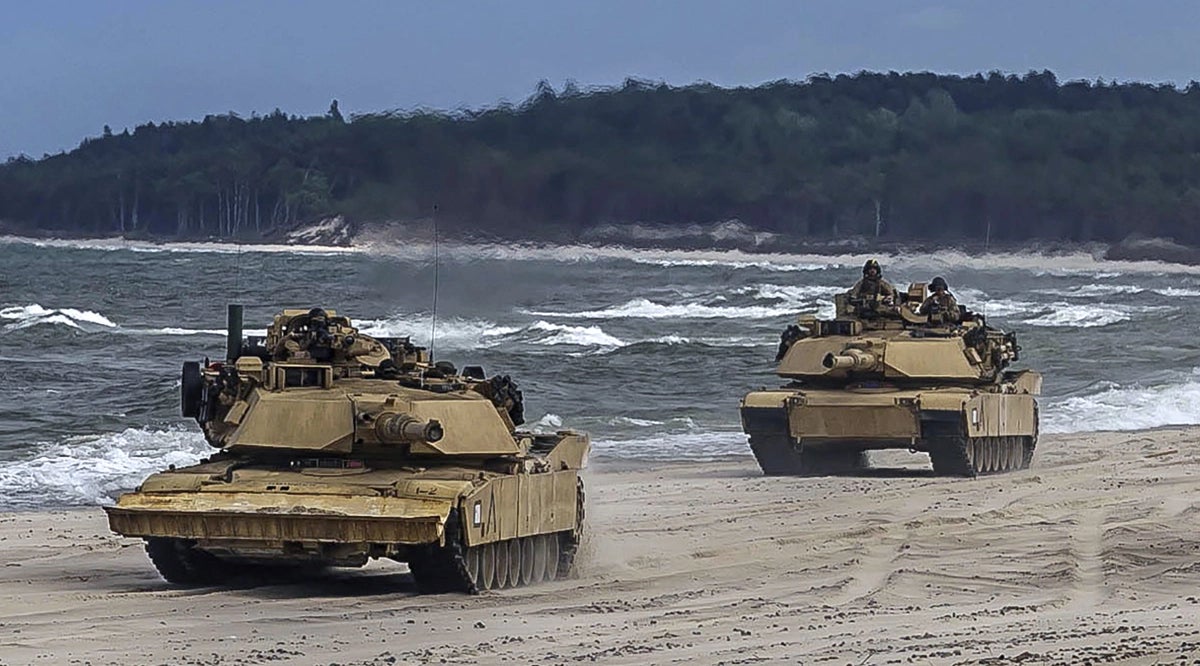Army Tanks Have Key Role in Amphibious Operations
Army Tanks Have Key Role in Amphibious Operations

As the sole provider of armored forces, the Army’s tanks will fill a critical role in any future amphibious assault undertaken by the joint force, according to the author of a new paper published by the Association of the U.S. Army.
The role of the Army’s armored force will only grow as the Marine Corps phases out its tanks, Maj. Matthew Graham writes in “Tanks in the Surf: Maintaining the Joint Combined Arms Landing Team.”
“While the Army lacks the doctrinal responsibility for amphibious operations, it should not and cannot abdicate its responsibility to consider or conduct amphibious operations as part of the joint force,” writes Graham, an active-duty armor officer with combat experience in Afghanistan who currently is a student at the School of Advanced Military Studies.
Instead, the Army should reenergize its doctrine, training and organization around amphibious operations and, specifically, the role of armor within them, with the goal of ensuring the “future of the joint force combined arms landing team,” Graham writes.
“In the popular imagination, amphibious operations are dominated by the initial assault or landing,” Graham writes. “However, this limited focus runs contrary to the U.S. Army’s historical experience.”
Mobile, protected and expeditionary armored vehicles were crucial to the Army’s success in several World War II campaigns, Graham argues, citing as examples the campaigns in Sicily, Leyte and Luzon.
During the Sicily campaign in the summer of 1943, when Allied forces invaded Sicily and took it from the Axis powers, a platoon of tanks from the 2nd Armored Division “significantly contributed to the defeat of the Axis counterattack,” the paper says.
“Tanks contributed to the protection of the beachhead against armored counterattacks,” Graham writes. “Because of their mobility, firepower and armored protection, they could rapidly exploit the surprise and shock achieved by the landings to advance inland toward operational objectives.”
Tanks also have been an invaluable asset in urban environments. During the Battle of Luzon, fought in the Philippines from January to August 1945, armor units enabled the 37th and 1st Cavalry Divisions to rapidly advance, Graham writes.
“[Armor units] engaged enemy tanks in strong defensive positions, routed out enemy snipers and machine-gun nests and undertook some of the most intense urban combat seen since Stalingrad,” Graham writes. “They operated dispersed in platoons and companies, with limited centralized control from their parent units. Yet, these armor units rendered invaluable service to the infantry they supported.”
In the future, the Army could once again find itself engaged in a conflict where its ability to conduct amphibious operations could be a key factor for inland power projection, Graham writes.
“The tank’s qualities of shock, mobility and protected firepower make it essential to the effectiveness of combined arms, especially in amphibious operations,” he writes. “While antitank guided missiles and drones have changed battlefield dynamics and increased the need for a recapitalization of antiair and antitank guided missiles defensive technologies, the simple fact remains that the tank will continue to evolve and endure as a member of the combined arms team."
To read the full paper, click here.

